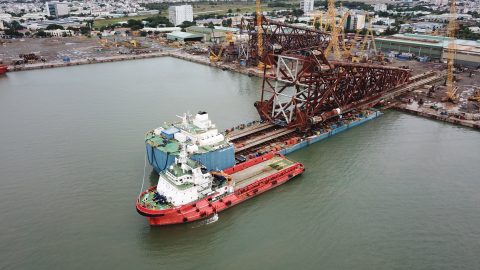
Sarens beats Typhoon Noru to load two jackets in Vietnam
Jackets load-out Sarens
Towards the year end, Vietsovpetro, a joint venture between Vietnam and Russia, tagged Sarens to complete a two-part project involving the load out of two jackets in Vung Tau, Vietnam.
Want to read more?
You have read all of your free premium articles for this month. Please become a subscriber to keep reading.
Subscribe now!
Take advantage of our exclusive offer to get full access to all premium content.




